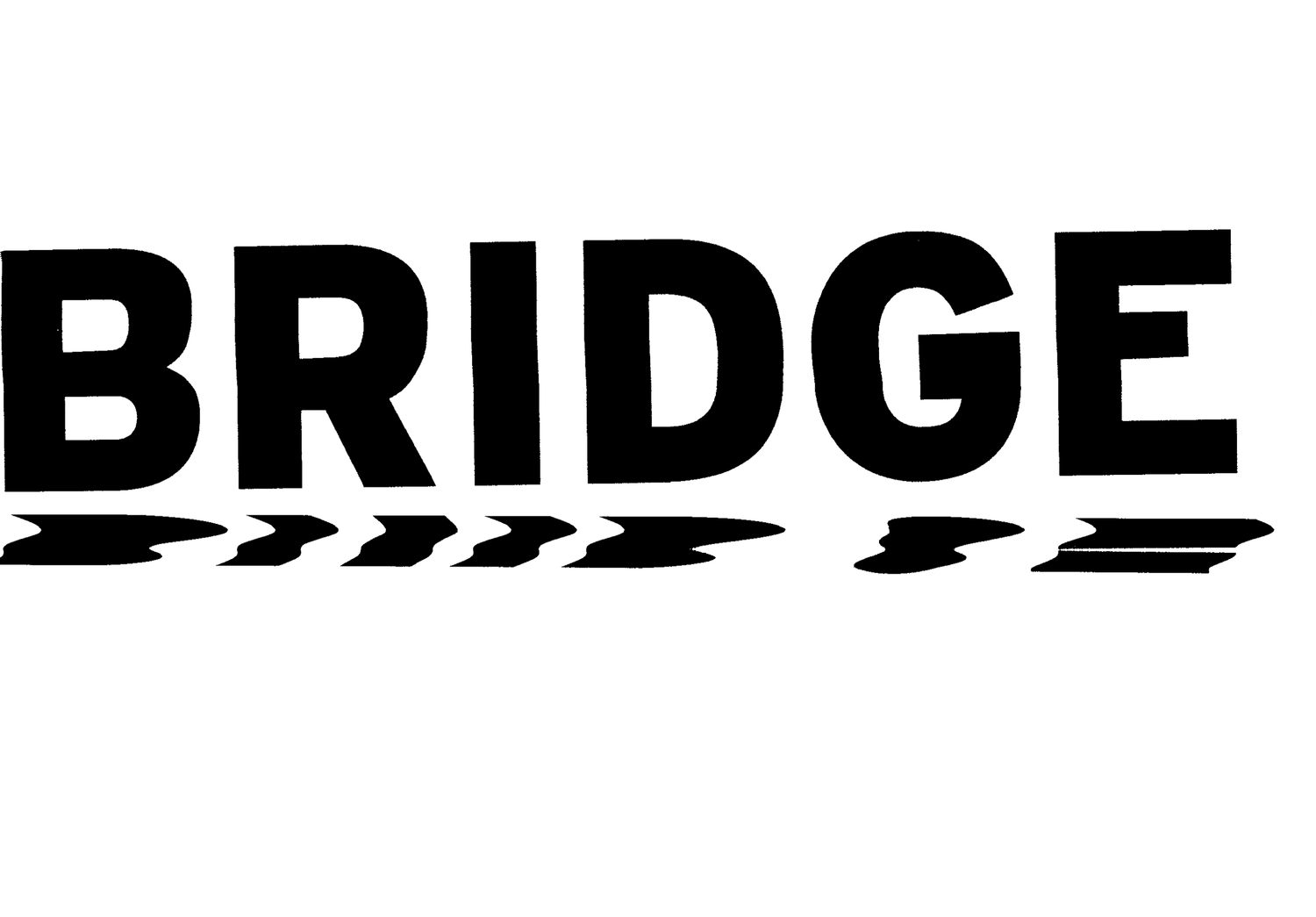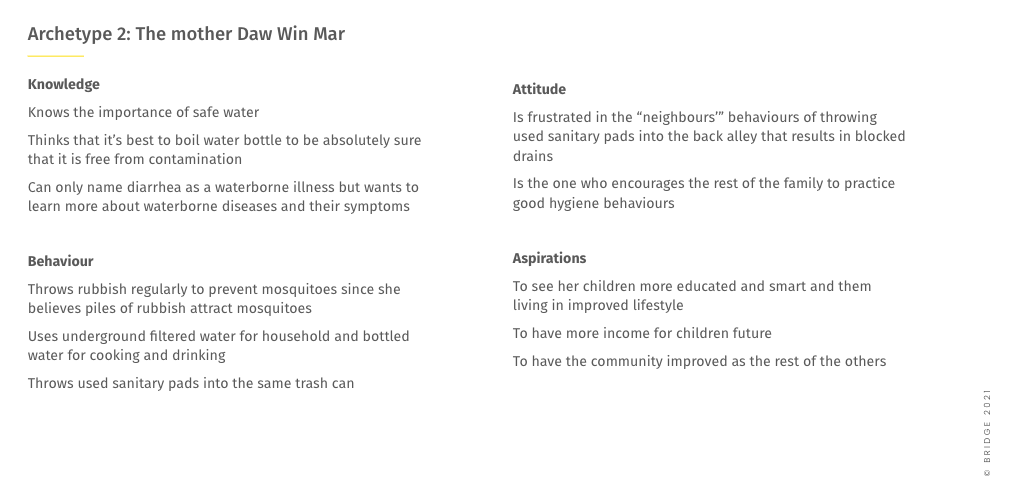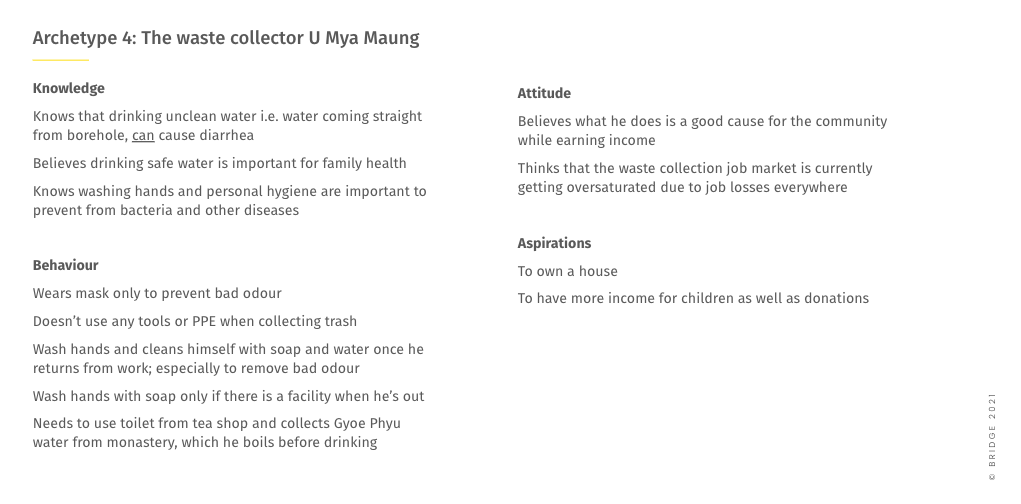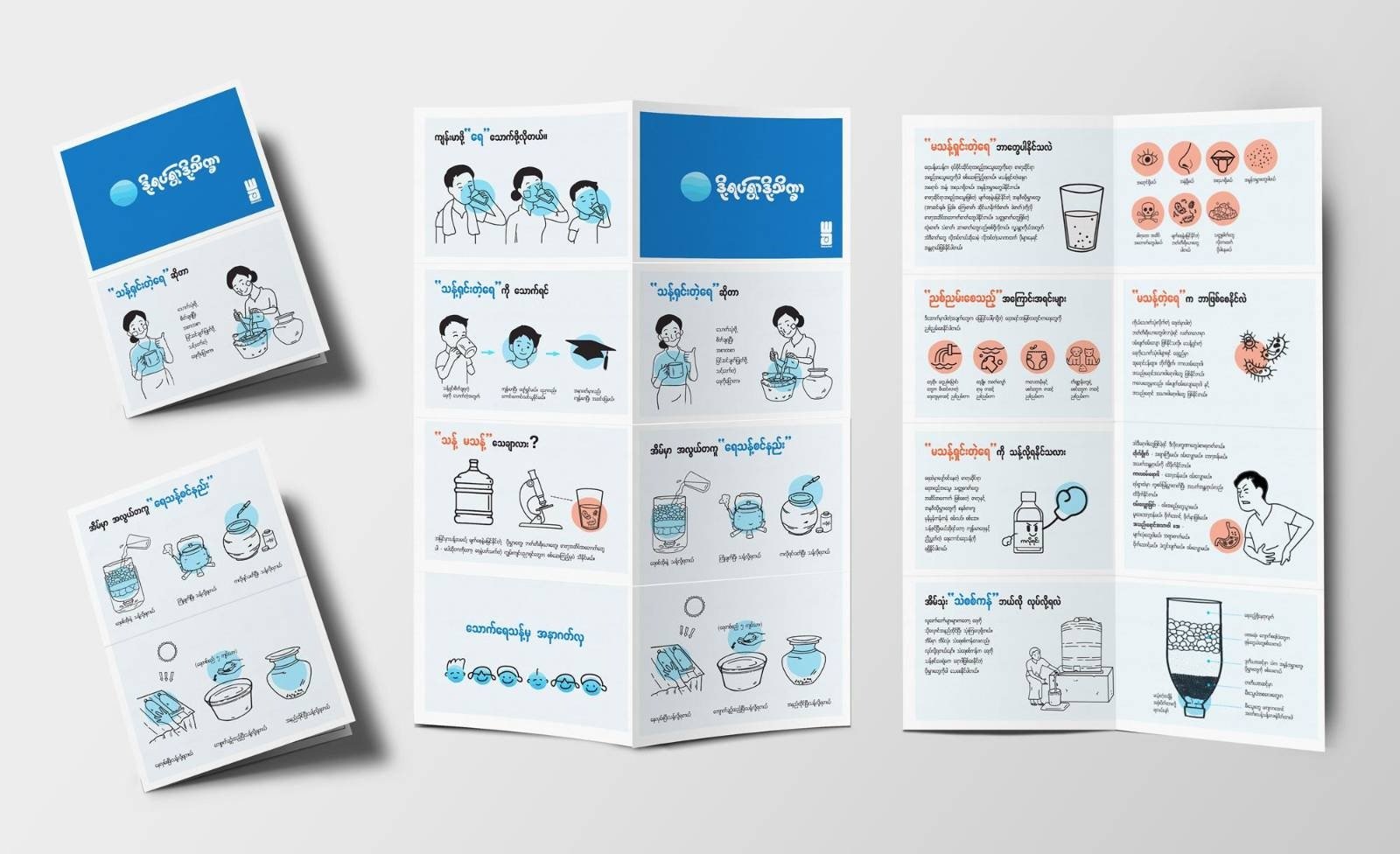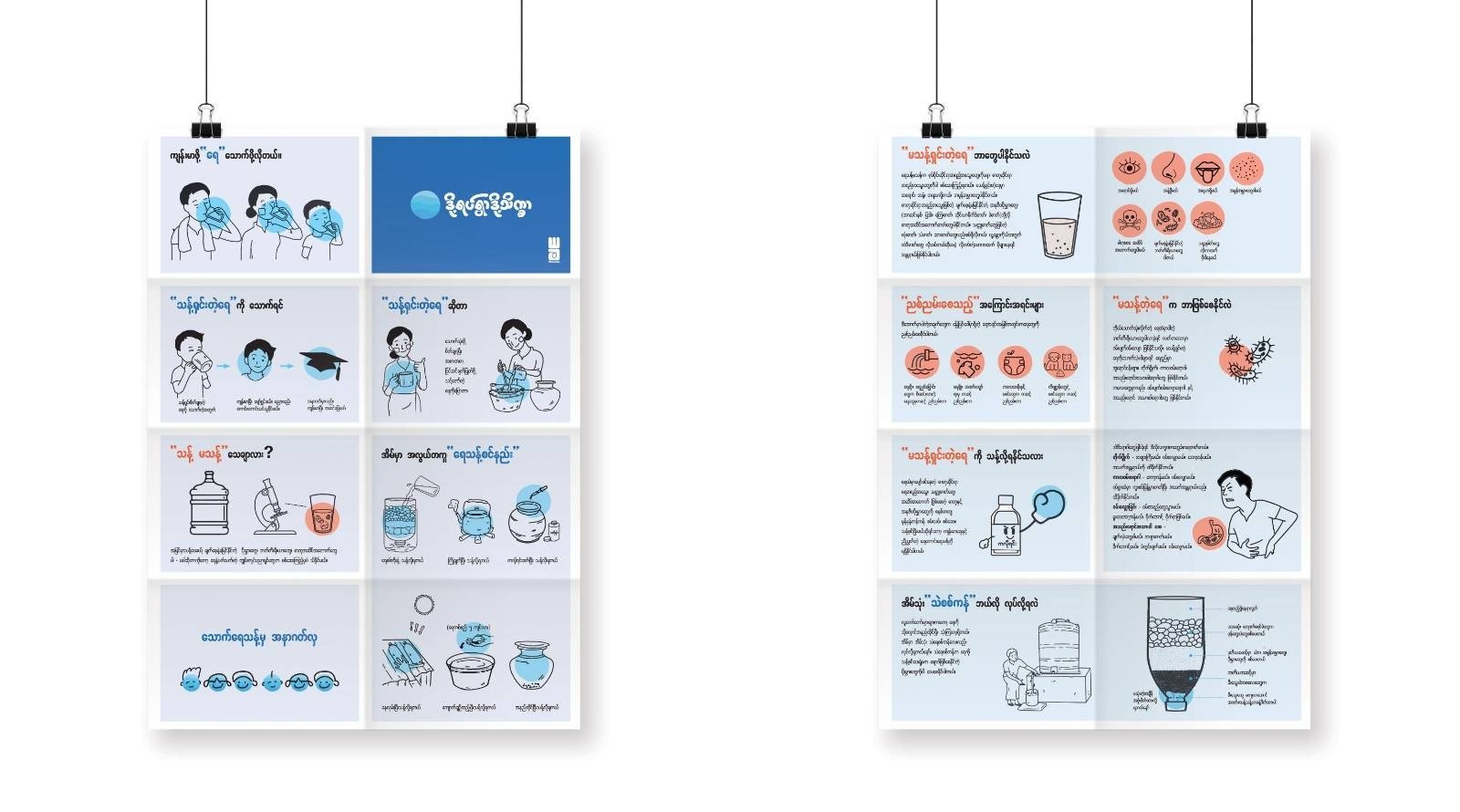Our community, our dignity
Community-led promotion of positive behaviours around hygiene
WaterAid Myanmar implements water, sanitation and hygiene (WASH) improvement programmes for poor migrant communities in peri-urban Yangon, containing the largest squatter camp among the 330 townships in Myanmar and the highest level of unemployment among Myanmar’s urban centres.
Bridge was brought in to engage key stakeholders that play a crucial influencing role within these communities and develop materials to serve as tools for them to spread the messages to a wider community.
With
WaterAid
Objective
Encourage positive behaviours around water, sanitation & hygiene in Yangon townships that were hit hard by Myanmar’s crises.
Demographic
Mostly migrant community members from peri-urban Yangon
Types of work
Workshops & Facilitation, Branding, Design
Themes
WASH, Climate & Environment
WaterAid/ Aung Htay Hlaing
Background
The project townships are left behind due to low income and unstable opportunities, indebtedness, high emergency health costs, lack of social support, climate change and increasing population density. Here, the rollout of safe, sustainable and inclusive WASH is imperative to improve the livelihoods of communities and help them break free from poverty.
Research
We conducted FGD sessions with five different groups picked out from the community by WaterAid Myanmar.
For each of our focus groups, we had up to a maximum of ten participants, facilitated using a semi-structured interview guide, focusing especially on WASH behaviours, knowledge, and aspirations within the community.
Our aims were twofold:
To gain insight into WASH behaviours for each of the groups, so that we could better
To identify and create IEC materials that generate awareness and improve knowledge for WASH behaviours in the community.
People throw rubbish regularly to control mosquitoes and prevent bad odour. Women leaders and mothers said neighbours remind each other to throw trash properly and regularly. They think that peer/social pressure also works in the neighbourhood.
However, the adolescent group mentioned that people still throw rubbish despite ‘No Litter’ signage displayed in different places. They said they wanted to have a system of imposing a significant amount of monetary penalty for littering. They also thought that providing waste bins at every corner of the streets could solve the problem.
— From FDG research
Creative
Using the abstract circular mark or stain as a visual anchor, we wanted to create faces of the community, drawn by themselves. The message was anchored in the social—people in their community—not information, instructions or didacticism.
We gave them the tools to express themselves (on WASH messaging) as a promise to each other to commit to positive behaviours. By including drawings and giving community members an opportunity to complement the drawings, we aimed to increase engagement and make the materials appealing to this specific audience.
Elements from this concept are used throughout the IEC materials.
We are extremely grateful to your team for turning our visions into reality through the IEC materials which you have produced. It is a joy to see them in their final form and will be an even greater joy to see the impact they make in the communities.
Our special thanks to Sabai, Nanda and Yin Yin for your patience and flexibility with meeting our requests. These past few months were demanding, but had become easier for our colleagues as we could rely on your expertise for the deliverables.
The WaterAid Myanmar team is thoroughly impressed with your work, and we wish for many more opportunities to work together in the future.
— Fundraising & Grant Management Coordinator, WaterAid Myanmar
